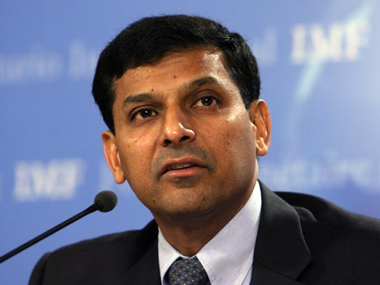The Indian bond market is where RBI Governor Raghuram Rajan’s maiden policy is facing the immediate test. Yields have been rising in the market. Yields and prices of bonds are inversely proportional. This means when yields rise, prices fall.
Yields on the benchmark ten-year paper have risen 60 basis points after the RBI raised its repo rate by 25 bps. Prior to the central bank’s policy review, the yields were at 8.17 percent.
Adding to the worries, the Rs 4,000 crore of the Rs 15,000 crore bonds auctioned yesterday devolved on the underwriters. (The Times of India headline screams “Rs 4000 crores of Gilts Unsold”. It is sensational and factually incorrect as all government bond auctions are underwritten by primary dealers (PDs) and no auction can fail.)
[caption id=“attachment_1130647” align=“alignright” width=“380”]  Raghuram Rajan. Reuters[/caption]
In other words, of the Rs 15,000 crore worth of bonds offered at the auction, PDs bought Rs 4,000 crore, or 27 percent, of papers. This is called devolving the auction.
The auction received bids worth 1.58 times the auction amount (in previous auctions the subscription was over two times) indicating that the RBI could have let the auction clear fully to the bidders if it wanted to do so. The RBI devolved the auction partially on the PDs, as it did not want to pay higher yields.
Banks bid at higher yields, which means the bond market’s reaction to Rajan’s first policy review is extremely negative. It is testing the new governor’s ability to balance market reactions and tough policy decisions.
The higher yields mean the bond market is factoring in more repo rate hikes. Market participants also do not expect open market operations (OMO) purchase auctions and are uncertain as to when the marginal standing facility (MSF) rate will be brought down to 100 bps over repo from current levels of 200 bps over repo.
MSF is the window where banks access RBI funding at higher than repo rate. They make use of this if they do not get enough funds from the daily repo window as par the liquidity adjustment facility (LAF), where the rate is 7.5 percent now.
The market is struggling with the restriction on banks’ access to the LAF window for funds, which the RBI has, as part of its efforts to tighten liquidity and defend the rupee, capped at 0.5 percent of individual bank’s deposit. High cost of funds, rate hike fears and continuous bond supply through auctions are pushing bond yields higher.
The next bond auction is scheduled for the 27 September. The fact that the auction size is reduced by Rs 1,000 crores to Rs 14,000 crores will not help improve sentiment. The market is going to bid negatively in the auction and the RBI will either have to devolve the auction again or will reject all bids outright.
Devolving auctions or rejecting bids in auctions does not help, as there is an auction scheduled almost every week starting October 2013. The government, much to the market’s relief, has stuck to its budgeted borrowing schedule and is borrowing Rs 235,000 crores in the October-March. The government will be auctioning Rs 15,000 crores of bonds in every auction for the next four months.
Rajan will have to clam the bond market down if he wants the government borrowing to go through smoothly. The RBI handles all the borrowing for the government and it cannot have a situation where the market bids with fear at the auctions.
As it is, benchmark bond yields are at two-year high. These levels were hit when WPI inflation was over 9 percent levels and fiscal deficit was 5.9 percent of GDP. Inflation is now at 6.1 percent levels and fiscal deficit 4.8 percent of GDP. In this scenario, bond yields should ideally be trending down.
Bond market will await some calming moves by the RBI as it goes into October auctions. Will Rajan oblige?
Arjun Parthasarathy is the Editor of www.investorsareidiots.com a web site for investors.


)
)
)
)
)
)
)
)
)



